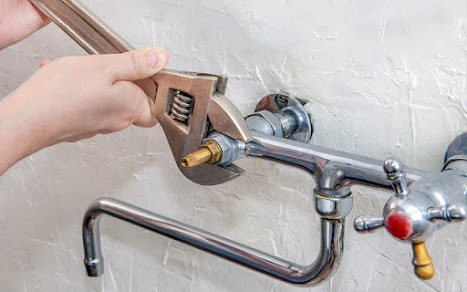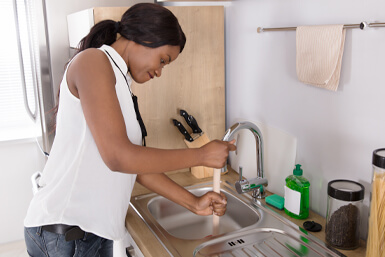The article following next in relation to Why is My Home Making Strange Plumbing Noises is amazingly engaging. Don't overlook it.

To identify noisy plumbing, it is necessary to identify first whether the undesirable sounds happen on the system's inlet side-in various other words, when water is turned on-or on the drain side. Noises on the inlet side have actually varied causes: too much water stress, worn valve and also tap parts, improperly linked pumps or various other devices, incorrectly placed pipe fasteners, as well as plumbing runs having way too many limited bends or various other constraints. Sounds on the drainpipe side usually stem from poor location or, as with some inlet side noise, a layout consisting of limited bends.
Hissing
Hissing sound that takes place when a tap is opened a little generally signals too much water stress. Consult your neighborhood water company if you presume this problem; it will certainly have the ability to tell you the water stress in your location and can mount a pressurereducing shutoff on the incoming water supply pipe if essential.
Thudding
Thudding noise, often accompanied by trembling pipelines, when a faucet or home appliance shutoff is turned off is a condition called water hammer. The sound and also vibration are caused by the reverberating wave of pressure in the water, which unexpectedly has no place to go. Often opening a valve that discharges water promptly into a section of piping including a restriction, elbow joint, or tee fitting can create the exact same condition.
Water hammer can normally be treated by setting up installations called air chambers or shock absorbers in the plumbing to which the issue valves or taps are linked. These tools permit the shock wave produced by the halted flow of water to dissipate airborne they include, which (unlike water) is compressible.
Older plumbing systems might have short upright sections of capped pipeline behind wall surfaces on tap competes the same function; these can eventually loaded with water, decreasing or destroying their effectiveness. The remedy is to drain pipes the water supply entirely by shutting down the major water supply shutoff as well as opening all taps. Then open up the major supply valve as well as close the taps one at a time, beginning with the tap nearest the valve and also ending with the one farthest away.
Babbling or Shrilling
Extreme chattering or shrilling that happens when a valve or tap is switched on, and that typically goes away when the fitting is opened totally, signals loosened or malfunctioning inner components. The remedy is to change the shutoff or tap with a new one.
Pumps and appliances such as cleaning equipments and dishwashers can transfer motor noise to pipelines if they are incorrectly connected. Connect such products to plumbing with plastic or rubber hoses-never stiff pipe-to isolate them.
Various Other Inlet Side Noises
Creaking, squealing, scratching, breaking, and also touching usually are triggered by the expansion or tightening of pipes, usually copper ones supplying warm water. The audios occur as the pipes slide versus loose fasteners or strike close-by residence framing. You can typically determine the location of the problem if the pipelines are revealed; just follow the sound when the pipelines are making sounds. Probably you will discover a loose pipe wall mount or a location where pipelines exist so near to floor joists or other framing pieces that they clatter against them. Connecting foam pipeline insulation around the pipes at the point of contact should remedy the trouble. Be sure bands as well as hangers are secure and also offer sufficient support. Where feasible, pipe bolts ought to be affixed to substantial architectural elements such as foundation wall surfaces rather than to mounting; doing so decreases the transmission of resonances from plumbing to surface areas that can amplify as well as move them. If attaching bolts to framework is unavoidable, wrap pipelines with insulation or other resistant material where they speak to fasteners, and sandwich the ends of new fasteners between rubber washers when installing them.
Remedying plumbing runs that deal with flow-restricting limited or numerous bends is a last option that needs to be undertaken just after consulting a proficient plumbing specialist. However, this scenario is relatively common in older residences that might not have been constructed with interior plumbing or that have seen numerous remodels, particularly by amateurs.
Drain Noise
On the drainpipe side of plumbing, the chief objectives are to eliminate surface areas that can be struck by dropping or rushing water and also to insulate pipes to contain inescapable sounds.
In brand-new construction, tubs, shower stalls, commodes, and wallmounted sinks as well as containers should be set on or against durable underlayments to minimize the transmission of audio through them. Water-saving toilets as well as faucets are less noisy than traditional designs; mount them as opposed to older kinds even if codes in your location still allow utilizing older components.
Drainpipes that do not run vertically to the basement or that branch into horizontal pipeline runs sustained at floor joists or other framing existing specifically bothersome noise troubles. Such pipelines are large sufficient to radiate substantial vibration; they also lug considerable quantities of water, which makes the scenario worse. In brand-new construction, define cast-iron dirt pipes (the huge pipes that drain bathrooms) if you can manage them. Their enormity includes much of the noise made by water going through them. Likewise, stay clear of transmitting drains in wall surfaces shown rooms and also spaces where individuals collect. Walls consisting of drains must be soundproofed as was explained earlier, utilizing dual panels of sound-insulating fiber board and also wallboard. Pipes themselves can be wrapped with special fiberglass insulation made for the purpose; such pipelines have a resistant plastic skin (sometimes having lead). Outcomes are not always acceptable.
WHY IS MY PLUMBING MAKING SO MUCH NOISE?
This noise indeed sounds like someone is banging a hammer against your pipes! It happens when a faucet is opened, allowed to run for a bit, then quickly shut — causing the rushing water to slam against the shut-off valve.
To remedy this, you’ll need to check and refill your air chamber. Air chambers are filled with — you guessed it — air and help absorb the shock of moving water (that comes to a sudden stop). Over time, these chambers can fill with water, making them less effective.
You’ll want to turn off your home’s water supply, then open ALL faucets (from the bathroom sink to outdoor hose bib) to drain your pipes. Then, turn the water back on and hopefully the noise stops! If you’re still hearing the sound, give us a call to examine further.
Whistles
Whistling sounds can be frustrating, as sometimes the source isn’t easily identified. However, if you can pinpoint which faucet or valve that may be the cause, you’ll likely encounter a worn gasket or washer — an easy fix if you replace the worn parts!Whistling sounds from elsewhere can mean a number of things — from high water pressure to mineral deposits. Your best plan of attack here is to give our plumbing experts a call. We’ll be able to determine where the noise is coming from and what the cause may be, then recommend an effective fix!
Cracks or Ticks
Cracking or ticking typically comes from hot water going through cold, copper pipes. This causes the copper to expand resulting in a cracking or ticking sound. Once the pipes stop expanding, the noise should stop as well.
Pro tip: you may want to lower the temperature of your water heater to see if that helps lessen the sound, or wrapping the pipe in insulation can also help muffle the noise.
Bangs
Bangs typically come from water pressure that’s too high. To test for high water pressure, get a pressure gauge and attach it to your faucet. Water pressure should be no higher than 80 psi (pounds per square inch) and also no lower than 40 psi. If you find a number greater than 80 psi, then you’ve found your problem!
Next step is to give us a call in order to install a pressure regulator. Trust us, you don’t want to wait to resolve this issue. Not only is the sound annoying, but high water pressure can be destructive to your home — including damaging certain appliances, like your washer and dishwasher.
Dripping
You might be accustom to the slow quiet drip your kitchen faucet makes. You might have even tuned out your bathroom sink dripping and drabbing all day long — but it’s time to find its cause.
A slow drip could signify a variety of easy to fix issues, such as a worn out O ring, or loose part. And by ignoring the drip, you could be wasting up to 2,000 gallons of water a year! So start conserving water — get it looked at ASAP.
https://www.pwessig.com/blog/2018/december/why-is-my-plumbing-making-so-much-noise-/

We hope you enjoyed reading our topic about Why Your Water Pipes Are Noisy and How To Shut Them Up. Thanks a lot for taking a few minutes to read our article post. Do you know someone else who is looking into the topic? Why not share it. Many thanks for your time. Visit again soon.
Connect for quality.